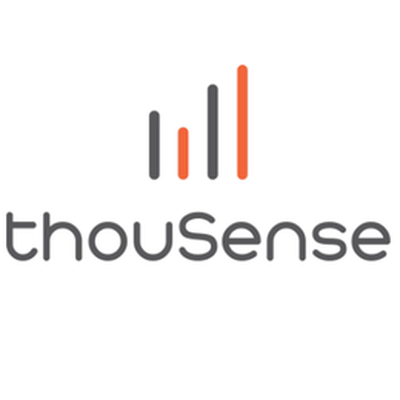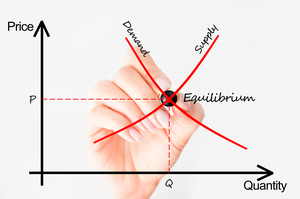How Can We Forecast Inventory Demand?
الجسم
Techniques for demand forecasting are crucial to inventory management. You can take steps to make sure you have the right stock to maximize sales and profit if you can predict market demand accurately. But creating a precise inventory demand prediction is no easy task. This post reveals eight best practices and approaches for demand forecasting that you just must know.
The technique of estimating customer demands for an inventory system over a predetermined time period is known as inventory demand forecasting. For the best inventory control, a corporation can hold the proper quantity of stock without overstocking or under stocking by accurately estimating inventory demand. Forecasting inventory demand frequently makes use of previous data and market understanding of how need can change.
Types of Inventory Forecasting
You can forecast inventory using one of four main strategies
- Forecasting trends: Make predictions based on variations in the demand for your goods throughout time. Seasonality and other abnormalities in historical sales data are not always taken into account by this.
- Graphical forecasting: By diagramming historical data, you can spot trends and add slopped historical trends to find potential insights that could have gone unnoticed without the visual aid.
- Qualitative Forecasting: Focus groups & market analysis are typically used in qualitative forecasting. Using this kind of data, forecasters then develop models.
- Quantitative forecasting: This method projects future demand using numerical data from the past. The forecast is typically more accurate the more information collected.
The value of precise inventory forecasting
You may make inventory forecasting as simple or as sophisticated as you like. The more comprehensive your inventory forecasting methods, the more precise your projections will be, as a general rule. Accurate demand projections enable you to effectively meet client demands without investing in huge stock amounts, hence reducing your overall operational expenses. Starting with fundamental forecasting approaches is advised because inventory planning can be difficult to complete without the proper direction.
Strategies for predicting demand
A business can utilize a variety of demand forecasting strategies, including quantitative forecasting (based on historical market information) and qualitative prediction (based on more individualised opinions and insights).
- Demand-type forecasting for inventory
- Demand and inventory trends
- Estimating seasonal item demand
- High-quality inputs
- Outliers in inventory demand forecasting
- Recognize the accuracy of demand forecasting
- Periods and evaluations of demand forecasting
- Think about demand forecasting tools
1. Demand-type forecasting for inventory
The prior sales data for each item in your warehouse would reveal that demand for various products varies greatly. While the demand for some may be irregular or low over time, the demand for others may be constantly high.
The demand type of an item is crucial since it should be utilized to choose the kind of calculation (or technique) you employ when predicting. A product with unpredictable demand should be estimated using a different equation than one with steady demand, according to statistics.
2. Demand and inventory trends
As trends change, new technologies take the place of older ones, and social, economic, and legal reasons influence demand, the popularity for your items in stock will fluctuate.
As items progress through the product cycle, they will also follow patterns in demand. For instance, the demand trend will be upward during the expansion period whereas the tendency will be downward during the decline phase.
Keep an eye out for patterns in your past demand data and make any necessary adjustments to your inventory projections. If products are following a certain trend, there is no purpose in making a prediction based only on your base demand.
3. Estimating seasonal item demand
For certain of their product lines, almost every producer, distributor, or retailer can anticipate seasonal demand swings. Seasonal factors affecting demand include weather trends, school breaks, and annual customs.
You may take advantage of demand peaks and prepare for demand troughs by knowing how these seasonal events affect your consumers' purchasing behaviors.
The best practice is to keep your base need calculations distinct from your calculations of seasonal demand. This maintains the data organized and makes it simpler to utilize for future forecasts.
4. High-quality inputs
While using data from the past (quantitative demand forecasting) is a fantastic way to start, there are occasions when you'll also need to take more qualitative aspects into account. When predicting qualitative demand, one must take into account both upcoming events & exterior market variables, such as sales campaigns and rivalry.
To make your estimates as precise as possible, be sure to include any marketing or sales data you may have.
5. Outliers in inventory demand forecasting
Unexpected events or known activities (such as sales promotions, massive one-time orders, staff strikes, etc.) can cause unusual demand outliers.
Spend some time looking for outliers in your inventories forecasting data because they can greatly affect how accurate your estimates are. It is necessary to identify any demand data that is unusually high or low compared to the typical demand's appropriate standard deviation. Depending on whether it is a trend or an anomaly in demand, you must next decide whether to include it in your forecast calculations
6. Recognize the accuracy of demand forecasting
You shouldn't expect your demand predictions to be entirely correct. Therefore, you can account for this in your future estimates if you can figure out how inaccurate your previous demand predictions were. You can modify your inventory management policies as needed, such as by boosting safety stock levels to meet iffy demand periods, if you can ascertain how dubious a forecast is for a specific business period.
You may evaluate demand prediction performance, or forecast error, using a variety of formulas. While the Mean Absolute Divergence (MAD) displays the deviation of projected demand from actual demand in units, the Mean Absolute Percent Error (MAPE) determines overall mean percent change between your current and forecasted demand for a particular period.
7. Periods and evaluations of demand forecasting
The time frame you select for your prediction will directly affect how accurate your forecast will be. For instance, a prediction that considers the demand for your goods over the next 2 weeks is significantly less likely to be correct than one that considers want over the next year.
Additionally, you'll need to reassess your forecasts much more frequently than in slow marketplaces or even for slow moving goods if marketplaces are volatile or an item's demand pattern is irregular. You might need to change your forecasting intervals if stock hortages or instances of surplus stock start to occur.
8. Think about demand forecasting tools
A vast product variety and the desire to manage every SKU make accurate demand forecasting a challenging endeavor. A precise view of your warehouse's stock levels and your sales through each channel is also necessary for inventory forecasting.
No matter how complicated or variable the demand, inventory optimization software gives a quick and precise way to forecast. While e-Commerce platforms, warehouse management systems, and enterprise resource planning (ERP) systems can all provide some amount of forecast, investment in stock optimization tools supports more intricate demand forecasting needs.
In order to decrease stock outs, free up cash, and most importantly, satisfy customer demands, statistical demand forecasting solutions, like Thousense, will guarantee that you have a tool to quickly and accurately execute your complicated demand forecasting requirements.












تعليقات